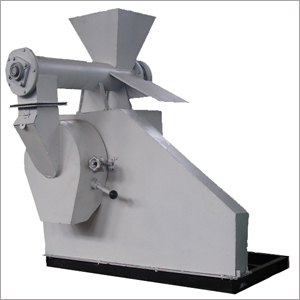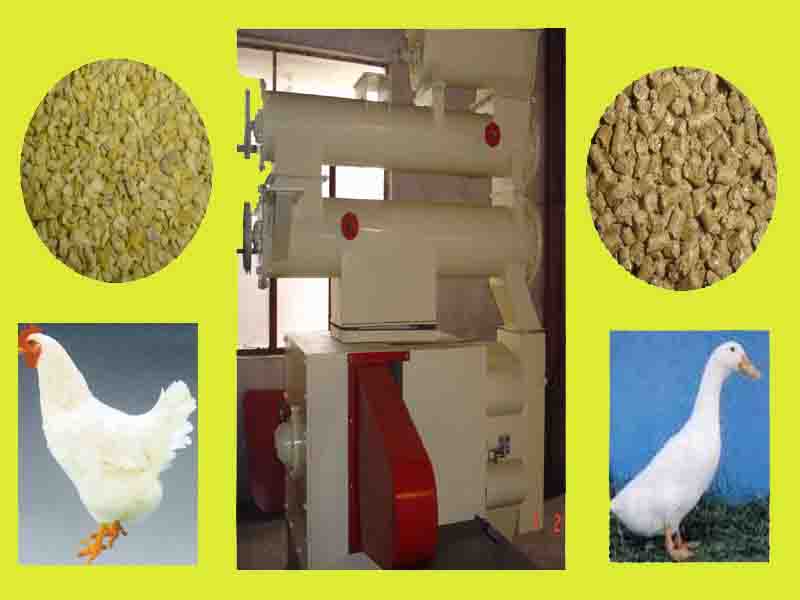February 29th, 2012
There are different design formats of feed pellet mill machine. The mill has evolved through subsequent innovation from as early as the last century. All along, the fundamental functions of pellet mills were to serve as pellet production components. Design architecture has since undergone various transformations to arrive at what is available today in the market. Flat die design has withstood the test of time to date. Other innovations are beginning to emerge but basic design principle remains unaltered.
 Feed pellet mill machine constitute well-arranged set of rollers and die. When you feed pellet into the machine, the material is crushed through compression in the holes in between the die. The holes give the pellet its outcome shape. Principally, this forms the most basic process design platform. In order to produce well refined quality products, other stages in the process come into play.
Feed pellet mill machine constitute well-arranged set of rollers and die. When you feed pellet into the machine, the material is crushed through compression in the holes in between the die. The holes give the pellet its outcome shape. Principally, this forms the most basic process design platform. In order to produce well refined quality products, other stages in the process come into play.
As it is commonly known, pellet machines are popular in generating fine feed particles which are a little tiny than its ring die. This factor has made the use of the ring die even more popular. Large scale pelletizing machines are currently in the market with low power consumption but highly efficient. To date, feed pellet mill machine have become the machine of choice at home in the provision of high quality feed products.
Categories: Feed Pellet Mill |
Comments Off
February 28th, 2012
Present day feed pellet mills are products developed based on vast experience in systems engineering. Its interfaces allow users to create facility that extends the life of existing hardware. Pellet mills convert waste products including the undesirable costly by-product waste into valuable goods. The outcome from the recycled waste is usually environmentally friendly with little or no carbon emissions. This is not only good news for environmentalists but makes a lot of sense in terms of business perspective. By transforming your waste material into valuable products helps you cut down on waste disposal expenses. The two combines to make a great saving for you besides contributing positively towards carbon-free environment.
 Typical feed pellet mill is able to handle the processing of coffee grounds, sawdust, chicken manure oil seed, wheat straw, cardboard and charcoal, just to mention but a few. It suffices to note that just like any other conventional machinery there are some instructional procedures which you must follow in order to reap the most benefits from your pellet mill. For instance you need to ensure that your mill exerts maximum mechanical pressure in order to achieve proper binding of materials. Pellets are easily broken by the production of steam resulting from excess moisture. Materials fed to the pellet mill should have equivalent particle sizes to avoid potential mechanical malfunctions.
Typical feed pellet mill is able to handle the processing of coffee grounds, sawdust, chicken manure oil seed, wheat straw, cardboard and charcoal, just to mention but a few. It suffices to note that just like any other conventional machinery there are some instructional procedures which you must follow in order to reap the most benefits from your pellet mill. For instance you need to ensure that your mill exerts maximum mechanical pressure in order to achieve proper binding of materials. Pellets are easily broken by the production of steam resulting from excess moisture. Materials fed to the pellet mill should have equivalent particle sizes to avoid potential mechanical malfunctions.
Pellet mills are capable of crushing a variety of materials like soft and hard woods by way of single die, and controlled addition of water plus binders; this should help achieve desired compression. Varying raw materials demand different amount of additives. The products that find their way into pellet mills are either from agricultural sustainable plants or industrial waste products that would otherwise have ended up at the landfill dump site. Use of feed pellet mills is encouraged to ensure future generations inherit carbon-free planet Earth.
Categories: Feed Pellet Mill |
Comments Off
 Feed pellet mill machine constitute well-arranged set of rollers and die. When you feed pellet into the machine, the material is crushed through compression in the holes in between the die. The holes give the pellet its outcome shape. Principally, this forms the most basic process design platform. In order to produce well refined quality products, other stages in the process come into play.
Feed pellet mill machine constitute well-arranged set of rollers and die. When you feed pellet into the machine, the material is crushed through compression in the holes in between the die. The holes give the pellet its outcome shape. Principally, this forms the most basic process design platform. In order to produce well refined quality products, other stages in the process come into play. Typical feed pellet mill is able to handle the processing of coffee grounds, sawdust, chicken manure oil seed, wheat straw, cardboard and charcoal, just to mention but a few. It suffices to note that just like any other conventional machinery there are some instructional procedures which you must follow in order to reap the most benefits from your pellet mill. For instance you need to ensure that your mill exerts maximum mechanical pressure in order to achieve proper binding of materials. Pellets are easily broken by the production of steam resulting from excess moisture. Materials fed to the pellet mill should have equivalent particle sizes to avoid potential mechanical malfunctions.
Typical feed pellet mill is able to handle the processing of coffee grounds, sawdust, chicken manure oil seed, wheat straw, cardboard and charcoal, just to mention but a few. It suffices to note that just like any other conventional machinery there are some instructional procedures which you must follow in order to reap the most benefits from your pellet mill. For instance you need to ensure that your mill exerts maximum mechanical pressure in order to achieve proper binding of materials. Pellets are easily broken by the production of steam resulting from excess moisture. Materials fed to the pellet mill should have equivalent particle sizes to avoid potential mechanical malfunctions.


